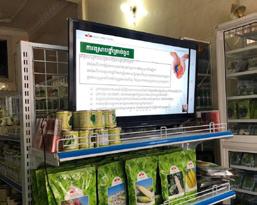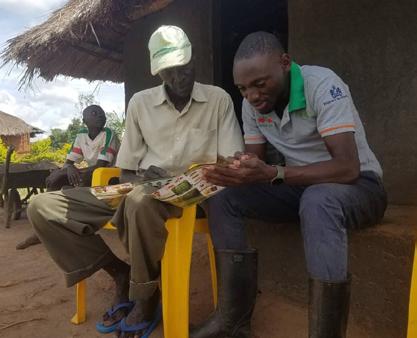
1 minute read
Adapting to COVID
Adapting to COVID-19
Social distancing during field training
Advertisement
By March 2020, COVID-19 emergency measures on the part of local governments were enacted in all countries in which KT operates. This resulted in closed borders, movement restrictions and in most cases full-scale domestic lockdowns.
In alignment with the commercial company’s policy, a temporary halt was affirmed for all field activities that involved organizing groups of farmers. In some cases, local teams were able to support key farmers to maintain progress on demos.



Piloting video screens with input retailers Knowledge through input retailers Encouraging farmers to follow precautions


Radio programs in Africa Training village volunteer in Uganda
Although most of our teams were able to resume field work by June, the situation remains unpredictable. We ensure that all training events follow strict protocols to reduce the risk of spreading the virus, including maintaining social distancing.
To prevent staff from exposing themselves, farmers and communities to the virus, we deliberately removed direct outreach targets from our KPIs. Rather than focusing on targeting numbers, our performance measurements shifted to adhere to local safety regulations. In addition, we encouraged farmers to set up simple sanitation facilities at their homesteads. Despite severe disruptions to our teams, their families and the communities in which we work, COVID-19 catalyses opportunities for piloting new approaches in training and outreach:
Direct extension with social distancing (family-focused, to reduce grouping of farmers) Support key farmers to maintain demos as hubs of good practice through social media platforms Farmer-to-farmer extension via key farmers and village agents (volunteers) Support advice through agri-input dealers Radio programs and podcasts Social media discussion groups Training through mobile phones (piloted in Nigeria) Wider access to printed technical guides Virtual meetings among our staff and partners Webinars with farmers via social media platforms Systematic contact with key farmers to provide technical follow-up via phone






